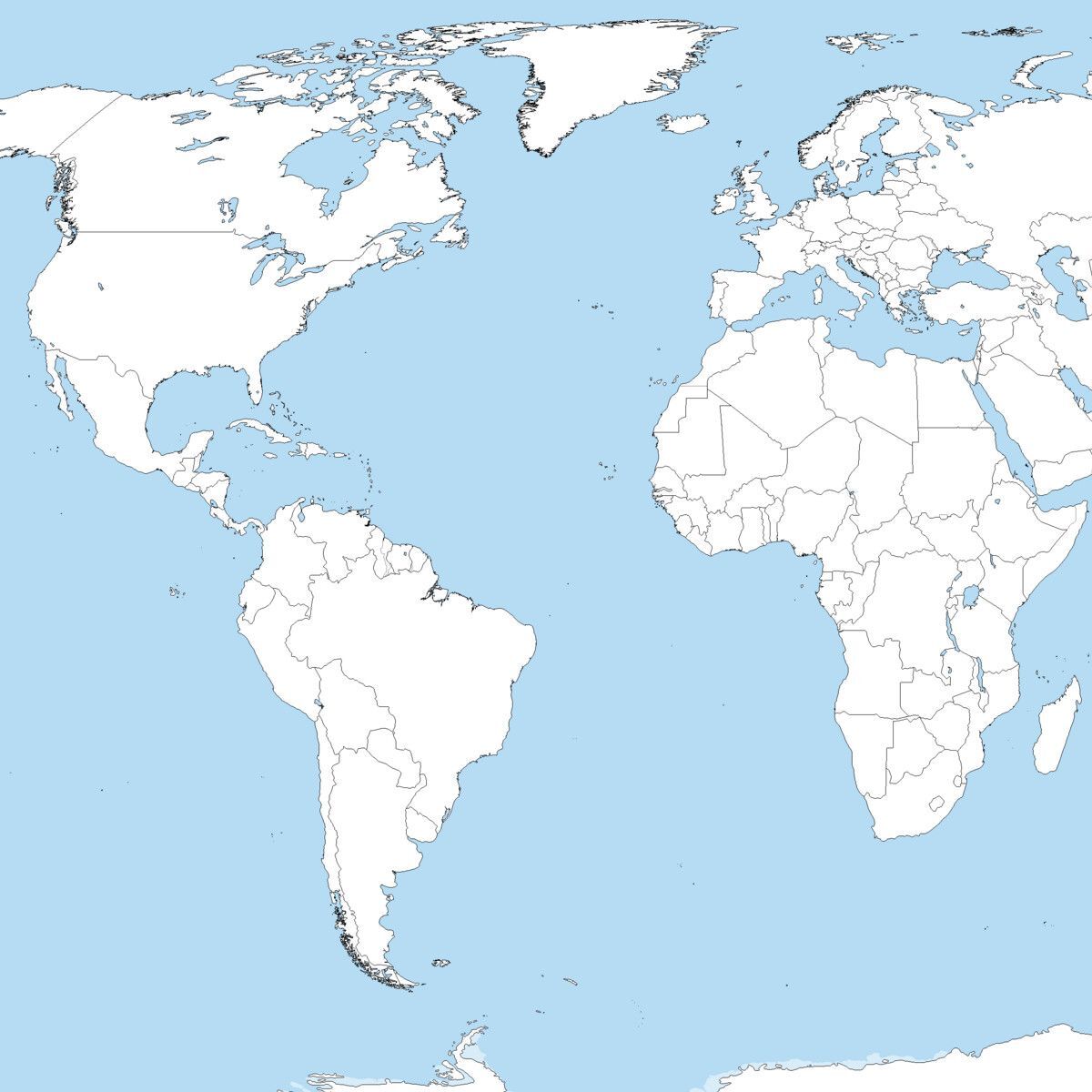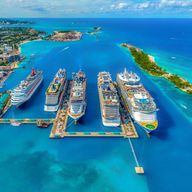

Riviera - 10/11/2027
The October 11, 2027 cruise on the Riviera departs from Tokyo, Japan. On this 14 Night Autumn In Asia (Tokyo To Yokohama) sailing, the ship will visit a total of 13 cruise port destinations, including its departure port. The Riviera sets sail on Monday, Oct 11th and returns on Monday, Oct 25th.
Cruise Itinerary
Itinerary
Riviera - October 11, 2027 - 14 Nights
| Day | Date | Port |
|---|---|---|
| 1 | Oct 11th | Tokyo, Japan |
| 2 | Oct 12th | Nagoya, Japan |
| 3 | Oct 13th | Kyoto Kobe Japan |
| 4 | Oct 14th | Beppu, Japan |
| 5 | Oct 15th | Kitakyushu (moji, Mojiku), Japan |
| 6 | Oct 16th | Busan (Pusan), South Korea |
| 7 | Oct 17th | Jeju City, Jeju-Do, (cheju-Do), South Korea |
| 8 | Oct 18th | Incheon (seoul). South Korea |
| 9 | Oct 19th | At Sea |
| 10 | Oct 20th | Shanghai, China |
| 11 | Oct 21st | At Sea |
| 12 | Oct 22nd | Kagoshima, Japan |
| 13 | Oct 23rd | Kochi, Japan |
| 14 | Oct 24th | Shimizu, Japan |
| 15 | Oct 25th | Yokohama (tokyo), Japan |
The Riviera sails on October 11, 2027 for a 14 Night Autumn In Asia (Tokyo To Yokohama). The ship will depart the port of Tokyo, Japan at 5:00 PM and will return to the port of Yokohama (tokyo), Japan on Oct 25th at 8:00 AM. During the 15-day journey, the Riviera will visit 12 additional ports and will spend 2 days at sea.
Itinerary Safety Score
Based on my comprehensive research of cruise port safety information, including recent crime reports, travel advisories, Global Peace Index rankings, and specific port security concerns, we've created a "safety score" for each cruise port stop. The overall rating below represents a combined score for your specific cruise itinerary.
Cruise Ship

Riviera
Oceania Cruise Line
The Riviera was built in 2012 and is among Oceania's 6 ships in its fleet. The Riviera is included in the cruise line's Oceania class. In the cruise ship stats below, you'll find the Riviera vs all other Oceania ships.
Cruise Ports
Tolanaro (Fort Dauphin), Madagascar, offers docking at Tolanaro Port. Travelers explore Nahampoana Reserve and Libanona Beach. Excursions include lemur-watching at Berenty Reserve. Local markets sell zebu curry. The peak season, May to October, brings dry weather for coastal tours. Photography captures rainforests and Indian Ocean vistas. Dining onboard includes romazava, a Malagasy favorite. Souvenirs, like raffia crafts, are sold in ship shops. Briefings cover Tsitongambarika history. Light clothing and sun protection suit the tropical climate, while sturdy shoes enhance reserve walks. Tolanaro’s natural allure offers a vibrant Malagasy stop. Cruise travelers enjoy a mix of unique wildlife and scenic beaches, making Tolanaro an engaging destination for exploration.
Nagoya, Japan, provides docking at Nagoya Port. Travelers explore Nagoya Castle and Atsuta Shrine. Excursions visit Toyota’s factory museum for automotive history. Local markets sell kishimen noodles. The peak season, March to May, brings cherry blossoms and mild weather. Photography captures samurai castles and urban skylines. Dining onboard includes hitsumabushi, a Nagoya eel dish. Souvenirs, like noren curtains, are sold in ship shops. Briefings cover Aichi’s industrial history. Light layers suit the temperate climate, while comfortable shoes enhance castle walks. Nagoya’s blend of history and modernity offers a vibrant Japanese stop. Cruise travelers enjoy a mix of samurai heritage, spiritual sites, and industrial innovation, making Nagoya an engaging destination for exploring Japan’s cultural and technological richness in the Chubu region.
Kyoto, Japan, offers a cruise excursion from Kobe Port. Travelers explore Kinkaku-ji and Fushimi Inari Shrine. Excursions visit Arashiyama Bamboo Grove. Local markets sell kaiseki. The peak season, March to May, brings mild weather for city tours. Photography captures golden pavilions and torii gates. Dining onboard includes sushi, a Japanese favorite. Souvenirs, like kimono crafts, are sold in ship shops. Briefings cover Heian history. Light clothing and sun protection suit the temperate climate, while comfortable shoes enhance shrine walks. Kyoto’s cultural charm offers a vibrant Japanese stop. Cruise travelers enjoy a mix of historic temples and scenic groves, making Kyoto an engaging destination.
Beppu, Japan, docks at Beppu Port, 3 kilometers from downtown, with shuttles for 10-minute rides. The city, population 120,000, features the Hells of Beppu, geothermal hot springs for viewing. Travelers relax at Kannawa Onsen, 15 minutes east. Excursions to Mount Tsurumi, 20 minutes north, offer cable car rides. Local markets sell yuzu products. Peak season April to October; taxis 800-1200 JPY. Dining includes toriten (chicken tempura) at onsen cafes. Souvenirs feature bamboo crafts.
Kitakyushu, Japan, has docking at Moji Port. Travelers explore Kokura Castle and retro Mojiko district. Excursions visit Hiraodai’s limestone plateaus. Local markets sell yaki-udon. The peak season, March to May, brings mild weather. Photography captures samurai castles and port views. Dining onboard includes tonkotsu ramen, a local favorite. Souvenirs, like ceramic crafts, are sold in ship shops. Briefings cover Kyushu’s history. Light layers suit the temperate climate. Comfortable shoes enhance castle tours. Kitakyushu’s historic charm offers a serene Japanese stop, blending samurai heritage with coastal allure.
Busan, South Korea, in the southeast, sits on the Korea Strait, facing the Sea of Japan. The port is near Jagalchi Fish Market, where fresh seafood is sold daily. Haeundae Beach offers urban waterfront access, while Beomeosa Temple, in the forested hills, provides cultural history. The Gamcheon Culture Village, with colorful houses, draws visitors for its art and narrow alleys. Busan’s port history as a trading hub is evident in its maritime museum. The nearby Nakdong River Estuary is a birdwatching site, and the city’s coastal cliffs offer walking trails with ocean views.
Jeju City, South Korea, has docking at Jeju Port. Travelers explore Seongsan Ilchulbong’s volcanic crater. Excursions visit Manjanggul Lava Tube. Local markets sell tangerines. The peak season, April to June, brings mild weather. Photography captures volcanic landscapes and coastal vistas. Dining onboard includes haemul jeongol, a seafood hotpot. Souvenirs, like lava stone crafts, are sold in ship shops. Briefings cover Jeju’s geology. Light clothing suits the temperate climate. Sturdy shoes enhance hikes. Jeju City’s volcanic beauty offers a vibrant South Korean stop, immersing travelers in its natural wonders.
Incheon, South Korea, has docking at Incheon Port with excursions to Seoul. Travelers explore Gyeongbokgung Palace and Myeongdong markets. Excursions visit DMZ’s historic sites. Local markets sell kimchi. The peak season, April to June, brings mild weather. Photography captures palaces and urban skylines. Dining onboard includes bulgogi, a Korean favorite. Souvenirs, like hanbok dolls, are sold in ship shops. Briefings cover Korean history. Light layers suit the temperate climate. Comfortable shoes enhance city tours. Incheon’s access to Seoul offers a vibrant South Korean stop, blending culture with modern energy.
Take advantage of the many on board activites during your day at sea. You'll have more than enough to fill your day!
Shanghai, China, offers docking at Shanghai Port. Travelers explore The Bund and Yu Garden’s historic pavilions. Excursions visit Suzhou’s classical gardens. Local markets sell xiaolongbao. The peak season, April to October, brings mild weather for city tours. Photography captures skyscrapers and Huangpu River vistas. Dining onboard includes Peking duck, a Chinese favorite. Souvenirs, like silk crafts, are sold in ship shops. Briefings cover Shanghai’s history. Light clothing and sun protection suit the temperate climate, while comfortable shoes enhance city walks. Shanghai’s urban allure offers a vibrant Chinese stop. Cruise travelers enjoy a mix of modern skyline and historic heritage, making Shanghai an engaging destination for exploring China’s cosmopolitan heart.
Take advantage of the many on board activites during your day at sea. You'll have more than enough to fill your day!
Kagoshima, Japan, has docking at Kagoshima Port. Travelers explore Sakurajima volcano’s active trails. Excursions visit Sengan-en Garden’s historic grounds. Local markets sell shochu. The peak season, March to May, brings cherry blossoms. Photography captures volcanic landscapes and coastal vistas. Dining onboard includes kurobuta pork, a Kagoshima specialty. Souvenirs, like ceramic crafts, are sold in ship shops. Briefings cover Kyushu’s history. Light layers suit the temperate climate. Sturdy shoes enhance volcano hikes. Kagoshima’s volcanic beauty offers a dynamic Japanese stop, blending nature with cultural heritage.
Kochi, Japan, has docking at Kochi Port. Travelers explore Kochi Castle’s samurai history. Excursions visit Katsurahama Beach and Ryugado Cave. Local markets sell bonito flakes. The peak season, March to May, brings mild weather. Photography captures castle views and Pacific shores. Dining onboard includes katsuo tataki, a local seared tuna. Souvenirs, like yosakoi crafts, are sold in ship shops. Briefings cover Shikoku’s history. Light layers suit the temperate climate. Comfortable shoes enhance castle tours. Kochi’s coastal heritage offers a serene Japanese stop, blending samurai history with scenic beauty.
Shimizu, Japan, offers docking at Shimizu Port. Travelers explore Mount Fuji viewpoints and Nihondaira’s tea gardens. Excursions visit Shizuoka’s Toro Ruins. Local markets sell wasabi. The peak season, April to October, brings mild weather for coastal tours. Photography captures Fuji’s slopes and Suruga Bay vistas. Dining onboard includes unagi, a Japanese favorite. Souvenirs, like tea crafts, are sold in ship shops. Briefings cover Shizuoka history. Light clothing and sun protection suit the temperate climate, while comfortable shoes enhance garden walks. Shimizu’s scenic charm offers a vibrant Japanese stop. Cruise travelers enjoy a mix of natural beauty and cultural heritage, making Shimizu an engaging destination for exploring Japan’s Fuji region.
Yokohama (Tokyo), Japan, offers docking at Yokohama Port with excursions to Tokyo. Travelers explore Senso-ji Temple and Shibuya Crossing. Excursions visit Kamakura’s Great Buddha. Local markets sell yakitori. The peak season, April to October, brings mild weather for city tours. Photography captures neon streets and Tokyo Bay vistas. Dining onboard includes sushi, a Japanese favorite. Souvenirs, like ukiyo-e prints, are sold in ship shops. Briefings cover Edo history. Light clothing and sun protection suit the temperate climate, while comfortable shoes enhance city walks. Yokohama’s urban gateway offers a vibrant Japanese stop. Cruise travelers enjoy a mix of historic temples and modern cityscapes, making Yokohama an engaging destination.